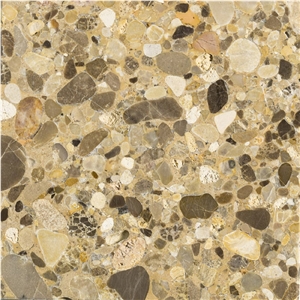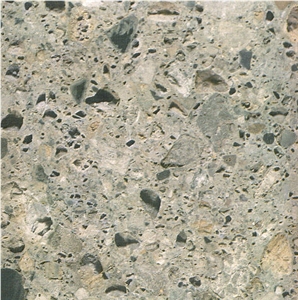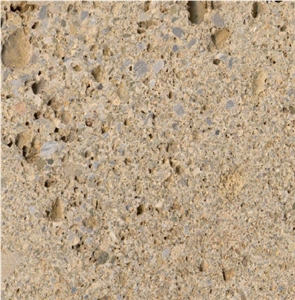Beige Conglomerate
( 4 )
Color:
Country:
-
 Additional Names:Lindabrunner Conglomerate,Lindabronner Stein,Lindabrunn Conglomerate,Lindabrunn Fein Konglomerat,Lindabrunn Mittelkorn Konglomerat,Lindabrunn Mittel KonglomeratLindabrunner Conglomerate,Lindabronner Stein,Lindabrunn Conglomerate,Lindabrunn Fein Konglomerat,Lindabrunn Mittelkorn Konglomerat,Lindabrunn Mittel KonglomeratPost Request
Additional Names:Lindabrunner Conglomerate,Lindabronner Stein,Lindabrunn Conglomerate,Lindabrunn Fein Konglomerat,Lindabrunn Mittelkorn Konglomerat,Lindabrunn Mittel KonglomeratLindabrunner Conglomerate,Lindabronner Stein,Lindabrunn Conglomerate,Lindabrunn Fein Konglomerat,Lindabrunn Mittelkorn Konglomerat,Lindabrunn Mittel KonglomeratPost Request Austria
-Conglomerate
Austria
-Conglomerate -
 Additional Names:Ceppo Brecciola Speciale Conglomerate,Ceppo D'adda Conglomerate,Ceppo Del Brembo ConglomerateCeppo Brecciola Speciale Conglomerate,Ceppo D'adda Conglomerate,Ceppo Del Brembo ConglomeratePost Request
Additional Names:Ceppo Brecciola Speciale Conglomerate,Ceppo D'adda Conglomerate,Ceppo Del Brembo ConglomerateCeppo Brecciola Speciale Conglomerate,Ceppo D'adda Conglomerate,Ceppo Del Brembo ConglomeratePost Request Italy
-Conglomerate
Italy
-Conglomerate -
 Additional Names:Lindabronner Stein,Lindabrunner Konglomerat,Lindabrunn Conglomerate,Lindabrunn Mittelkorn,Lindabrunn MittelLindabronner Stein,Lindabrunner Konglomerat,Lindabrunn Conglomerate,Lindabrunn Mittelkorn,Lindabrunn MittelPost Request
Additional Names:Lindabronner Stein,Lindabrunner Konglomerat,Lindabrunn Conglomerate,Lindabrunn Mittelkorn,Lindabrunn MittelLindabronner Stein,Lindabrunner Konglomerat,Lindabrunn Conglomerate,Lindabrunn Mittelkorn,Lindabrunn MittelPost Request Austria
-Conglomerate
Austria
-Conglomerate -
 Additional Names:Gosau KonglomerateGosau KonglomeratePost Request
Additional Names:Gosau KonglomerateGosau KonglomeratePost Request Austria
-Conglomerate
Austria
-Conglomerate
- 1
-
Can Austria's Gollinger Nagelfluh Conglomerate be used in wall coverings?Yes, Gollinger Nagelfluh conglomerate from Austria can be used as a material for wall coverings. The conglomerate is a type of sedimentary rock made up of different-sized pebbles and rocks cemented together. It is known for its attractive appearance and durability, making it suitable for various applications in construction and design. Gollinger Nagelfluh conglomerate can be cut into thin slabs or tiles to create unique and visually appealing wall coverings. These can be used in both interior and exterior walls, providing a natural and textured look to any space. The conglomerates natural variation in color and patterns adds depth and character to the walls, making it a popular choice for architects and designers. Due to its durability and weather resistance, Gollinger Nagelfluh conglomerate can also be used for exterior cladding, adding a touch of elegance and durability to the buildings fa?ade. Additionally, it can be used in fireplace surrounds, feature walls, accent walls, and many other applications where a distinctive and durable wall covering material is desired.Read More
-
Are there color variations of Austria's Gollinger Nagelfluh Conglomerate?Yes, there are color variations of Austrias Gollinger Nagelfluh Conglomerate. The rock formation typically consists of a mixture of varying sizes of rocks and pebbles held together by a matrix of sand or gravel. The color of the conglomerate can range from gray to reddish-brown and can also have dark spots or streaks. The variation in color is due to the different types of rocks in the mixture.Read More
-
Is Italy's Ceppo Grigio Conglomerate an expensive stone?I do not have access to the current market prices of materials. However, Ceppo Grigio is generally considered a high-end material that is commonly used in luxury buildings and high-end interior design projects, so it could likely be more expensive than other types of stone. The exact cost, however, would depend on factors such as the size and quality of the stone as well as the specific location and supplier.Read More
-
Can Iran's Jajrom Conglomerate be used exterior applications in very windy climates?The Irans Jajrom Conglomerate is mainly used as a building material in interior applications such as flooring, countertops, and wall cladding. It is composed of various minerals and has a strong, durable nature, making it suitable for use in areas with high foot traffic and heavy use. However, its suitability for exterior applications in very windy climates may vary. As it is primarily designed for indoor use, it may not have undergone the necessary testing or modifications to withstand harsh weather conditions and ongoing exposure to wind, moisture, and temperature variations. If you intend to use the Jajrom Conglomerate in exterior applications in very windy climates, it would be advisable to consult with the manufacturer or a professional architect/engineer experienced in working with this material. They can provide specific recommendations, assess its performance, and suggest any necessary reinforcements or modifications to ensure its suitability and durability in such conditions.Read More
-
Is Iran's Bafq Conglomerate an expensive stone?I cannot predict the price of any stone. However, the Bafq Conglomerate is a type of stone found in Bafq, a city in Iran. Its price depends on factors such as its quality, size, rarity, and market demand. It is commonly used in construction and decorative purposes such as flooring, walls, and countertops.Read More
-
Can Iran's Conglomerate Tah Koopi be used outdoors?I do not have access to specific information on whether Tah Koopis products can be used outdoors. However, some of the products offered by Tah Koopi, such as insulation materials or industrial adhesives, may potentially be suitable for outdoor use, depending on their specific properties and intended applications. It is advisable to consult Tah Koopis product specifications and guidance or speak to a representative for further information.Read More
-
What is the slip resistance rating of polished Conglomerate?I cannot provide a specific answer as slip resistance rating can vary depending on various factors such as the type of conglomerate, the finish of the surface, the texture, and more. It is best to consult the supplier or the manufacturer for the slip resistance rating of a specific polished conglomerate tile or surface.Read More
-
Can Italy's Ceppo Norico Conglomerate be used outdoors?Yes, the Ceppo Norico Conglomerate from Italy can be used outdoors. It is a durable and weather-resistant material that is often used for exterior cladding, paving, and landscaping. Its natural stone appearance and robust properties make it a popular choice for outdoor applications.Read More
-
Can Italy's Ceppo Poltragno Conglomerate be used exterior applications in very rainy climates?The Ceppo Poltragno Conglomerate is known for its durability and resistance to weathering, making it suitable for exterior applications in various climates. However, when it comes to very rainy climates, it is essential to consider additional factors such as proper installation techniques and maintenance. The Ceppo Poltragno Conglomerate is a dense material that can withstand moisture and rain to some extent. Its composition includes different types of stones that are bound together with a cementitious binder, providing strength and durability. This conglomerate is often used for exterior cladding, paving, and other architectural elements. In very rainy climates, proper installation techniques like adequate waterproofing and sealing are crucial to prevent water infiltration and potential damage. It is important to ensure that the installation follows industry standards and guidelines specific to the material to maximize its durability. Regular maintenance is also essential in rainy climates to ensure the longevity of the Ceppo Poltragno Conglomerate. Proper cleaning, removing debris, and promptly addressing any visible damage or stains will help preserve its appearance and prevent any potential issues caused by excessive moisture. Overall, while Ceppo Poltragno Conglomerate is suitable for exterior applications in very rainy climates, proper installation and maintenance are key to ensure its optimal performance and longevity. Consulting with professionals and following manufacturer recommendations is crucial for the best results.Read More
-
Can Slovakia's Breccia Blue Conglomerate be used in a kitchen?The usage of Slovakias Breccia Blue Conglomerate in a kitchen would depend on the specific properties and characteristics of the stone. Breccia Blue Conglomerate is typically a type of sedimentary rock formed from a combination of different materials, including pebbles, sand, and other fragments, cemented together by a natural binding agent. In general, conglomerate stones can be challenging to use in kitchens due to their porous nature and potential susceptibility to staining and etching. If the Breccia Blue Conglomerate has been properly sealed and treated, it may be suitable for certain kitchen applications like countertops or backsplashes. However, it is recommended to consult with a professional stone fabricator or supplier who can provide more specific information based on the properties of the specific Breccia Blue Conglomerate you are considering. Additionally, keep in mind that the aesthetic appearance and color of the stone can also impact its suitability for kitchen use. Some colors and patterns may be more forgiving when it comes to hiding stains or etching.Read More
-
What is the average flexural strength of Austria's Lindabrunner Grob Conglomerate?Im unable to browse the internet and retrieve real-time data. Therefore, I do not have access to the current average flexural strength of Austrias Lindabrunner Grob Conglomerate. However, according to their website, they offer a wide range of high-performance construction materials, including concrete, which typically has an average flexural strength of 3,000-5,000 psi.Read More
-
Can Iran's Conglomerate Marble be used exterior applications in hot climates?Yes, Irans Conglomerate Marble can be used for exterior applications in hot climates. Marble is known for its durability and ability to withstand high temperatures. However, it is important to note that not all marble varieties are suitable for external use, especially in extremely hot climates. It is recommended to consult with a knowledgeable professional or supplier to ensure that the specific marble variety you are considering is suitable for the intended use. Additionally, proper installation and maintenance are crucial to maximizing the longevity and performance of the marble in hot climate conditions.Read More
-
Can Austria's Ternitz Grobkorn Conglomerate be used in a bathroom?The Ternitz Grobkorn Conglomerate from Austria is primarily a type of building stone that is commonly used for exterior cladding, flooring, and landscaping. It may also be used for some interior applications, such as feature walls and fireplace surrounds, but it might not be the most suitable choice for a bathroom due to its characteristics. Using Ternitz Grobkorn Conglomerate in a bathroom could have some drawbacks. Firstly, it is a natural stone, which means it is porous and can absorb water if not properly sealed. In a wet environment like a bathroom, moisture resistance is crucial, and natural stones usually require regular sealing to prevent water damage and staining. Additionally, Grobkorn Conglomerate might have a rougher texture and coarser grain compared to other more commonly used bathroom materials like ceramic tiles or porcelain. This texture could make it more challenging to clean and maintain over time. Considering these factors, it is generally recommended to use materials specifically designed for bathroom environments, such as glazed ceramic or porcelain tiles, which are known for their water resistance, durability, and ease of maintenance.Read More
-
Can Austria's Ternitz Grobkorn Conglomerate be used outdoors?Yes, Austrias Ternitz Grobkorn Conglomerate can be used outdoors. Ternitz Grobkorn Conglomerate is a type of natural stone that is commonly used for various outdoor applications such as paving, landscaping, fa?ade cladding, and outdoor flooring. Its durability and resistance to weathering make it suitable for outdoor environments. Additionally, its unique texture and appearance can enhance the aesthetics of outdoor spaces.Read More
-
Is Bulgaria's Balkan Red Conglomerate an expensive stone?I do not have access to current market prices. However, the Balkan Red Conglomerate can be considered relatively expensive as it is a rare and highly sought-after ornamental stone, known for its unique red color and distinctive patterns. Its price varies depending on its quality, size, and availability.Read More
-
Are there color variations of Iran's Bafq Conglomerate?There is limited information available regarding specific color variations of Irans Bafq Conglomerate. Bafq Conglomerate is primarily known for its unique conglomerate rock formation, which is made up of various sedimentary particles such as sand, pebbles, and stones. As a result, the overall appearance of Bafq Conglomerate could vary in terms of color due to the diverse range of sediments present in the rock. However, without specific documentation or scientific studies focusing on the color variations of Bafq Conglomerate, it is difficult to provide detailed information regarding its specific color variations.Read More
-
Can Austria's Ternitz Grobkorn Conglomerate be used exterior applications in cold climates?The Ternitz Grobkorn Conglomerate is a type of natural stone that is primarily used in construction and landscaping. It is commonly used for interior flooring and wall cladding due to its durability and aesthetic appeal. While the Ternitz Grobkorn Conglomerate can withstand cold climates, its suitability for exterior applications depends on several factors. One of the main considerations is the freeze-thaw resistance of the stone. Freezing and thawing cycles can cause expansion and contraction of the stone, leading to cracks and deterioration over time. If the Ternitz Grobkorn Conglomerate has been tested and proven to have good freeze-thaw resistance, it can be used in exterior applications in cold climates. However, it is essential to ensure proper installation techniques and regular maintenance to minimize potential damage from the extreme weather conditions. It is recommended to consult with a professional architect or stone supplier to determine the specific suitability and limitations of the Ternitz Grobkorn Conglomerate for exterior use in cold climates.Read More
-
What is the specific weight of Conglomerate?The specific weight of conglomerate varies depending on the composition and density of the rock fragments that make up the conglomerate. It can range from approximately 2,200 to 2,800 kilograms per cubic meter (kg/m3) or 137 to 175 pounds per cubic foot (lb/ft3).Read More
-
How was Conglomerate mined in the past?Conglomerate was mined in the past using hand tools such as picks, shovels, and hammers. Miners would work in small groups or individually to break up the conglomerate rocks and extract the valuable minerals such as gold, iron, and copper. The process involved breaking the rocks into smaller pieces using hammers and chisels and then washing the material in streams or rivers to separate the minerals from the rock debris. Hydraulic mining techniques were also used in some areas, where high-pressure water jets were used to break up the rocks and wash away the sediment. However, this method was very damaging to the environment and was eventually banned due to its negative impact on rivers and water sources.Read More
-
How thick is Austria's Lindabrunner Mittel Conglomerate slabs?I dont have access to current data or information on Austrias Lindabrunner Mittel Conglomerate slabs thickness. However, I suggest consulting with a local building materials supplier or conducting further research from official sources for accurate information on the topic.Read More






